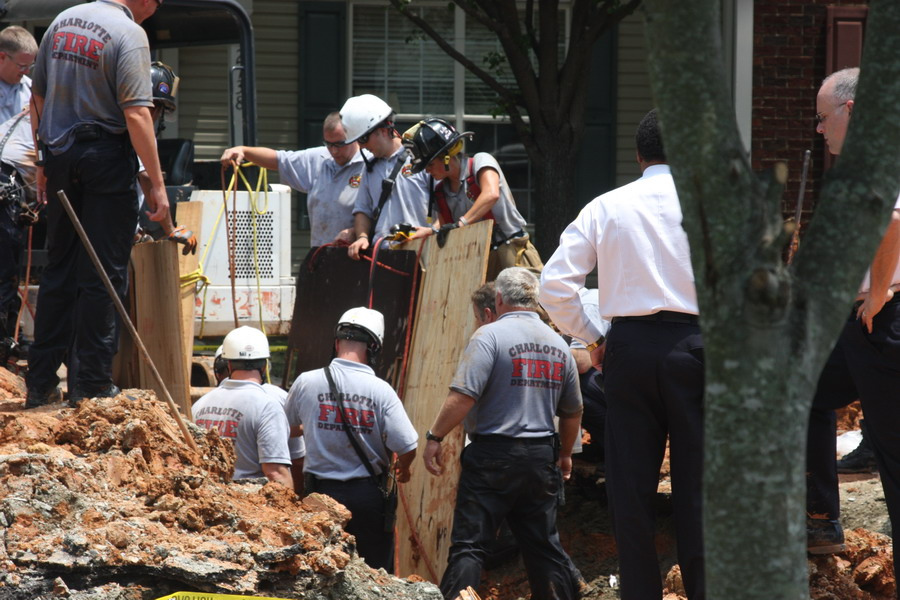Contractor Faces Prison Time for Trench Collapse Fatality

Alki Construction owner Phillip Numrich was sentenced on March 4, 2022, to 45 days in jail for his role in the 2016 trench collapse death of 36-year-old Harold Felton.
The trench collapse criminal case followed a Washington Department of Labor & Industries (L&I) investigation that found Alki Construction knowingly ignored basic, common sense safety rules that have been in place since the 1970s. If followed, those practices could have prevented Felton’s tragic death. L&I cited and fined the company for multiple workplace safety violations.
After a state Supreme Court decision cleared the way for prosecution, the King County Prosecutor moved forward with a felony charge of second-degree manslaughter. Numrich agreed to plead guilty to Attempted Reckless Endangerment and was sentenced today.
It is extremely rare for an employer to face jail time as a result of an on-the-job fatality. Joel Sacks, L&I Director, said, “The ultimate responsibility to keep workers out of needlessly dangerous situations lies with the employer. Trench safety standards have been in place since the 70s—there’s no excuse to justify ignoring them or any other workplace safety requirements. Employers must be held accountable when they put their workers lives at risk.”
For the fatal trench collapse, Numrich will also serve an 18-month probation that limits his contact with the Felton family and the type of work his company can perform. If he fails to meet the terms of that probation, he may be required to serve an additional 45-day jail term. Also, Alki Construction pleaded guilty to violations of the Washington Industrial Safety & Health Act and will pay a $25,000 fine. This is in addition to a fine issued by L&I in 2016 in connection with this investigation.
Safety violations led to fatal trench collapse
The facts of the case are particularly alarming. After several days of heavy rainfall, Numrich allowed work to go on in an eight to ten-foot deep trench, even though he had only brought enough shoring (safety equipment) to protect two of the four sides of the trench from a cave-in. In the construction industry, it is common knowledge that soil becomes less stable following heavy rains. When the sides collapsed, Felton was buried under more than six thousand pounds of dirt.
At the time, Numrich told L&I investigators he knew his workers were digging in rain-soaked, “type C” loam-sandy unstable soil. “The nature of the work is dangerous,” Numrich told investigators. “There is nothing safe about working with type C soil.” Numrich said he had left the work site to get lunch when the trench collapsed.
Excavation and trenching are known to be very hazardous work, so there are numerous safety requirements that must be followed, including ensuring trenches four feet deep or more have protective systems in place to prevent the sides from caving in.
Trenching safety requirements
Among other requirements, there must be ladders, ramps or other means for workers to safely enter or exit a trench. Daily inspections of trenches are required to monitor soil conditions. Numrich violated these and other workplace safety requirements.
Source: Washington State Dept. of Labor & Industries, “Construction company owner sentenced to 45 days in jail in fatal workplace trench collapse,” Mar. 4, 2022.
Safety and quality experts already know that TapRooT® Root Cause Analysis is the best tool to find human-performance-based root causes
TapRooT® RCA is the only system that uses scientifically derived root causes to eliminate bias and avoid blame. So, what are they missing? That Equifactor® Equipment Troubleshooting should be used WHENEVER there is an equipment failure.
Equifactor® equips the user with a series of predefined equipment troubleshooting tables. For example, there are tables for different types of pumps, AC and DC motors, refrigeration units, etc. These tables will give you a list of symptoms to choose from, and then provide an extensive list of possible causes for that symptom.
EQUIFACTOR® IS AN EFFECTIVE WAY TO GIVE YOUR MAINTENANCE AND RELIABILITY EXPERTS A VALID LIST OF POSSIBLE CAUSES TO BEGIN THEIR TROUBLESHOOTING EFFORTS.
So when would you use these Equifactor® Tables in your TapRooT® Investigation? The series of predefined equipment troubleshooting tables are obviously a great resource for an equipment failure incident. The tables give you a list of symptoms to choose from. However, don’t limit yourself to the obvious investigations. For example:
- You can also use Equifactor® during an injury investigation if one of your Causal Factors happens to be an equipment failure.
- Similarly, during an investigation of a Quality deviation, you may find a failure of a piece of equipment on the manufacturing line. Again, it could be employed to better understand the causes of the equipment failure (probably a Causal Factor), which will then lead to a better root cause analysis.
Use Equifactor® anytime an equipment failure is involved in your investigation. It’s an effective, efficient way to make sure you are fully covering all the possible errors and failures during your TapRooT® analysis.
Get the new book & a masterclass of learning in an Equifactor® Troubleshooting Course
The recently remastered 2-Day Equifactor® Equipment Troubleshooting & TapRooT® Root Cause Analysis Course comprises the complete package, as students receive the course, the new book, and the workbook. Take a look at the full course description.
Now is a great opportunity to get your maintenance personnel, equipment operators, and supervisors trained to increase equipment reliability at your plant.
We are excited to share with you the upcoming public Equifactor® courses. Reach out to us if you have any questions. To discuss on-site course arrangements, call us: 865.539.2139.



